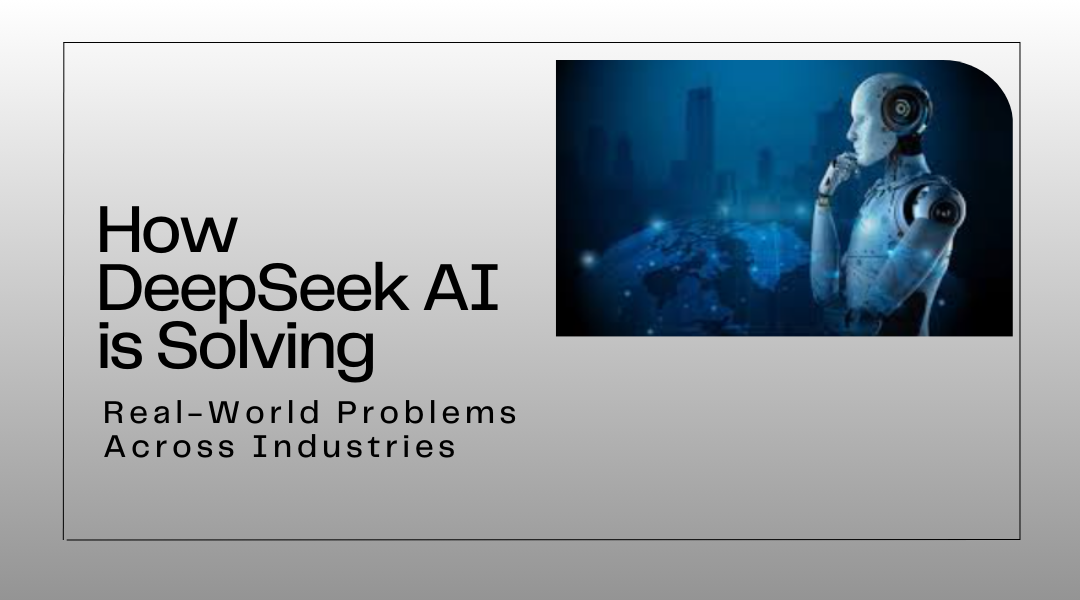We’re living in the age of AI, but beyond the buzzwords and flashy headlines, where is artificial intelligence actually delivering tangible value? The answer is everywhere—if you know where to look. From the retail floor to the classroom, from city streets to digital networks, advanced AI platforms like DeepSeek are moving from experimental projects to core operational tools. They’re not just automating tasks; they’re revealing insights hidden in plain sight, creating efficiencies, and solving stubborn problems. Let’s take a journey through several sectors where this technology is making a quiet but profound impact.
Retail: Knowing What You Want Before You Do
The modern retail landscape is a high-wire act. Stock too much, and you’re drowning in inventory costs. Stock too little, and you lose sales and customer goodwill. DeepSeek AI is becoming the industry’s tightrope pole, providing balance and foresight.
It’s not just about crunching numbers; it’s about understanding human behavior. For instance, a major outdoor apparel retailer used predictive analytics to anticipate regional demand spikes. By analyzing weather forecasts, social media trends, and local event data, the system automatically redirected shipments of rain gear to a coastal area forecast for a storm a week out, capitalizing on demand competitors missed.
Beyond logistics, the magic is in personalization. Imagine a home goods website that doesn’t just recommend a blanket because you bought one last year. Its AI understands you’re moving into a new phase of life—perhaps based on a search for “baby-proofing” and purchases of smaller, nesting-related items—and curates a collection of durable, easy-clean rugs and storage solutions, feeling less like a salesman and more like a helpful friend.
Education: The Dawn of the Personalized Classroom
Education has long struggled with the “one-size-fits-all” model. DeepSeek AI is helping to dismantle that, shifting the focus from teaching a class to nurturing each individual student.
Intelligent tutoring systems are the most exciting frontier. These aren’t simple multiple-choice helpers. Consider a language learning app powered by adaptive AI. It doesn’t just notice a student struggling with past tense verbs; it identifies the specific confusion between irregular and regular verbs and generates custom practice exercises, video explanations, and even conversational prompts tailored to that precise gap in knowledge.
For teachers, the burden of grading is being lifted. AI can now assess open-ended essays for structure, argument strength, and grammar, freeing educators from endless paperwork to do what they do best: inspire, mentor, and provide nuanced human feedback on creativity and critical thinking. Furthermore, predictive models can flag subtle signs a student is disengaging—a change in participation patterns, a dip in assignment scores—long before they fail a test, allowing for early, supportive intervention.
Transportation: Building Smarter, Safer Journeys
The goal of transportation is simple: get people and goods from A to B safely and efficiently. AI is the complex brain making that simple goal a reality.
Predictive maintenance is a game-changer for airlines and freight companies. Instead of following a rigid maintenance schedule, sensors on aircraft engines or truck transmissions feed data to an AI model. This model learns the unique “signature” of a healthy engine and can detect microscopic deviations in vibration or heat that signal a part will need replacing in 200 flight hours. This prevents catastrophic failures and saves millions by avoiding unnecessary maintenance on components with plenty of life left.
In cities, AI is untangling traffic. Ride-sharing companies use real-time route optimization that doesn’t just look at current traffic jams. It predicts congestion 15 minutes from now by analyzing the flow of all its vehicles, event let-outs, and even the timing of traffic lights, dynamically routing drivers to keep a city moving and reduce idling emissions.
Cybersecurity: The Digital Immune System
The old model of cybersecurity was like building a taller castle wall. But today’s threats come from within, disguised as normal activity. DeepSeek AI acts as a digital immune system, constantly learning what “normal” looks like for every user and device on a network to immediately identify sickness.
Anomaly detection is key. For example, if a marketing employee’s account normally accesses a cloud storage service from Chicago during work hours, and suddenly starts downloading large files from a foreign country at 3 a.m., the AI doesn’t need a known virus signature to sound the alarm. It recognizes the behavioral anomaly and can automatically lock the account, isolate the device, and alert analysts, stopping a data breach in progress.
This shifts the paradigm from reactive to proactive. AI can run continuous simulated attacks on its own network, identifying and patching vulnerabilities before real hackers can find them, creating a resilient and self-healing digital environment.
Conclusion: The Quiet Revolution is Here
The thread connecting these diverse stories is not just technology, but transformation. DeepSeek AI and platforms like it are not magical black boxes; they are powerful tools for amplification. They amplify a retailer’s intuition, a teacher’s attention, a logistician’s planning, and a security analyst’s vigilance.
The common ingredient for success across all industries is no longer just data, but the ability to understand it. Organizations that embrace this aren’t just automating old processes; they are fundamentally reimagining what’s possible, unlocking new levels of efficiency, safety, and personalization. This isn’t about machines replacing humans; it’s about machines empowering humans to do their best work. The quiet revolution is already underway, and it’s being built one algorithm at a time.
